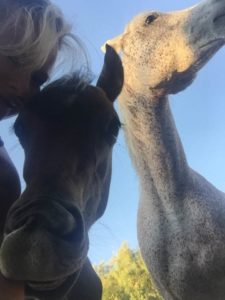 There is a saying in the medical community, “When you hear hoof beats, assume horses, not zebras.” This is a great phrase to help doctors when diagnosing a patient. It means that when looking at the symptoms that a patient has, think of the more common explanations first instead of jumping to the exotic. For example, when a patient comes in with a fever, the first thing a doctor should look for is other signs of the flu instead of testing for Ebola.
There is a saying in the medical community, “When you hear hoof beats, assume horses, not zebras.” This is a great phrase to help doctors when diagnosing a patient. It means that when looking at the symptoms that a patient has, think of the more common explanations first instead of jumping to the exotic. For example, when a patient comes in with a fever, the first thing a doctor should look for is other signs of the flu instead of testing for Ebola.
This is generally good advice, but what if you think horses so often that you ignore a zebra? One horrific example of this is the case of Justina Pelletier.[1] This 14 year old girl had been diagnosed with a mitochondrial disease at Tufts Medical Center, a center that specializes in mitochondrial diseases. But when Justina went to Boston’s Children’s Hospital for an ER visit, she was evaluated by a psychologist with a specialization in the somatization disorder (overreacting to real or imagined physical pain). The psychiatrist diagnosed her with the somatization disorder and removed Justina from her parents’ custody. For over a year, Justina was locked in a psych ward at Children’s Hospital and given very little contact with her parents. Eventually she was released and she is doing well under care at Tufts. But in this example, we see the doctors specializing in mitochondrial diseases diagnosing a mitochondrial disease, which would be their “horses,” and a psychologist diagnosing the most common thing he sees, somatization.
Companies do this all of the time. Everyone in the company has their specialization. We spend years developing our specialty and becoming very good at what we do. An organization can’t function without many different skills and specialties. And usually, those specialized skills are what help the organization overcome the challenges it faces. For example, marketing professionals make adjustments to problems with marketing. Problems arise though when we always assume our challenges are our “horses” and we don’t stop to look outside our specialty for zebras. Sometimes we don’t look for the zebras because we are so caught up in our area or silo of the organization it doesn’t occur to us to look for them. Other times we don’t see the zebras because we haven’t been trained to spot them, so they could walk right under our noses and we wouldn’t know they were there. This is where the third HPO factor of an Open Management comes into play.
Organizations need to be open and transparent with their information and ideas. When a problem arises, it’s rare that at first everyone will agree what the solution is. In fact often they won’t even agree what the problem is! This is because everyone approaches the situation with their own horses in mind. Often, bringing in someone from the outside who is familiar with finding both horses and zebras, can help the team clearly identify the correct problem and then help the team find their solution. This requires everyone to be open to the idea that just maybe there are some zebras out there. But with open communication, transparency, dialogue, and trust in one another’s skills, all of the zebras and horses can be identified and managed.
[1] http://www.freeadvice.com/news/Malpractice+Law/medical-child-abuse-or-medical-malpractice.htm

